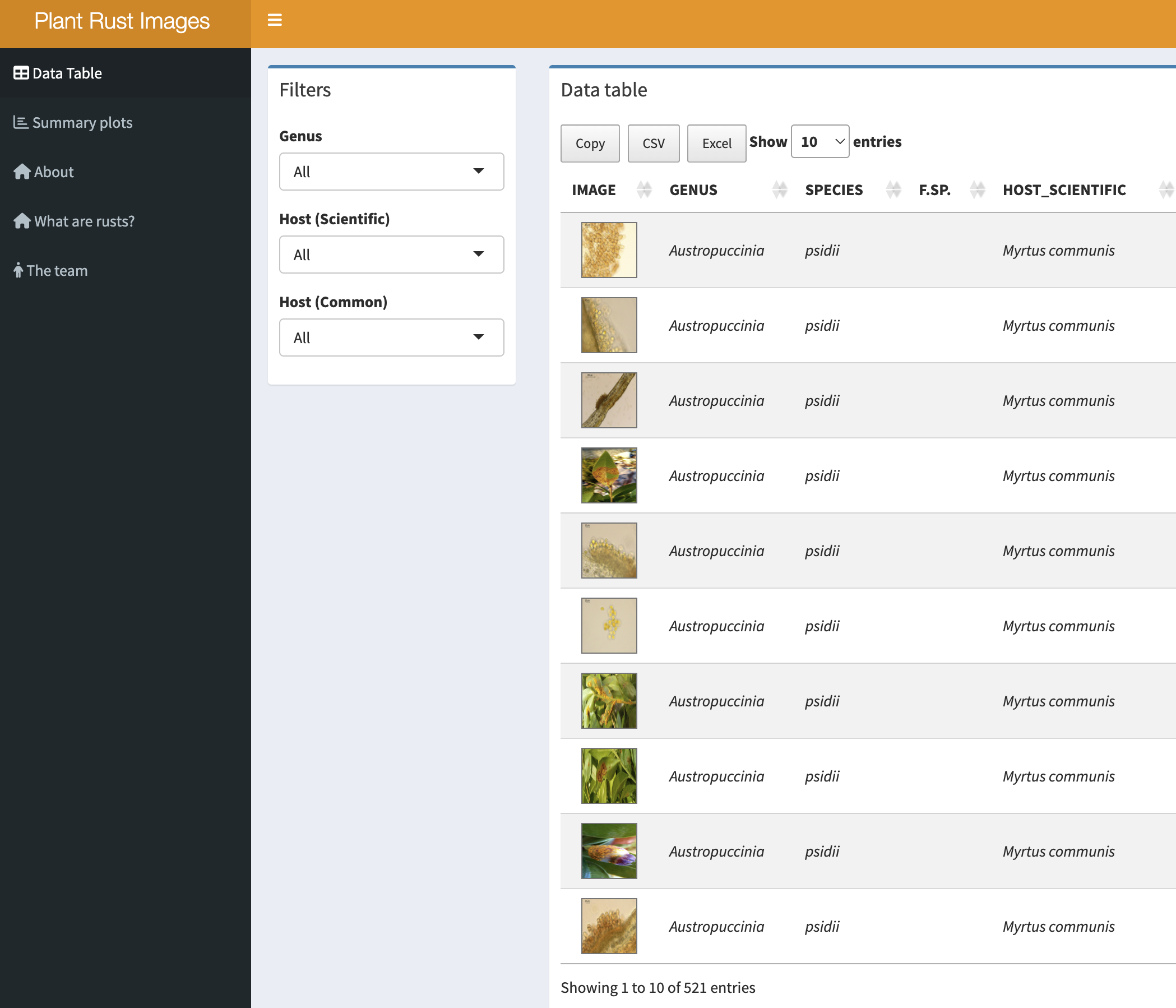
Plant Rust Images: an open photo gallery of rusts from South Africa
This repository is a selection of images of rust diseases assembled by plant pathologists from the University of the Free State, Bloemfontein, South Africa. It is not intended to be a complete checklist of rust fungi in South Africa, but rather pictures of signs and symptoms of rusts studied or collected over several years.

Using Reproducible Research to Revisit Published Results
In which the author revisits a previously published analysis and finds ways to improve it while using reproducible research to illustrate refitting a GAM using random effects to better fit the model to the data.

Dieback-free gravel for road construction
Phytophthora cinnamomi (the dieback ‘fungus’) is an introduced soilborne pathogen associated with the death of native plants. It is spread in infested soil, including gravel. Main Roads WA (MRWA) only uses dieback free gravel for road construction and repair; this is in short supply. One option is to treat gravel to kill Phytophthora.
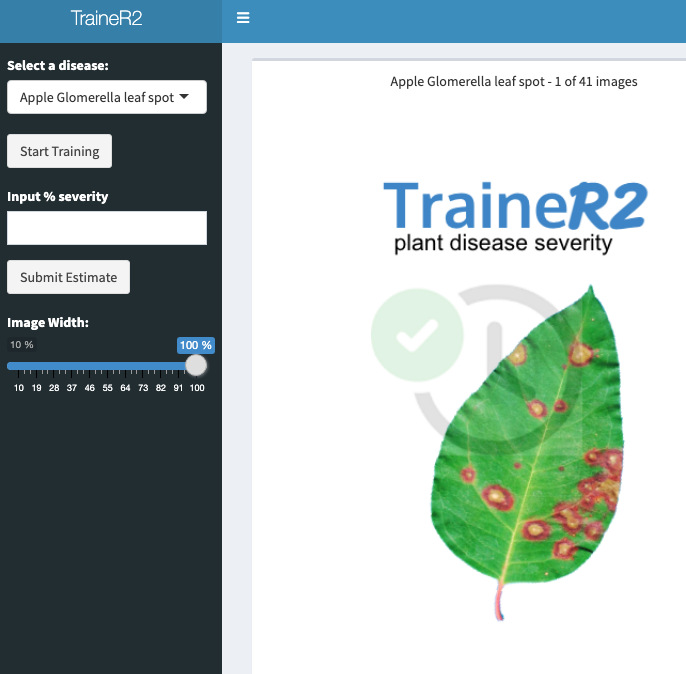
TraineR2: an evolution of TraineR that uses actual photos
TraineR2 is another Shiny app developed to train users in assessing disease severity, expressed as the percentage of the organ (leaf or fruit) affected by lesions. However, this app distinguishes itself by basing its assessments on actual photographs of disease symptoms.
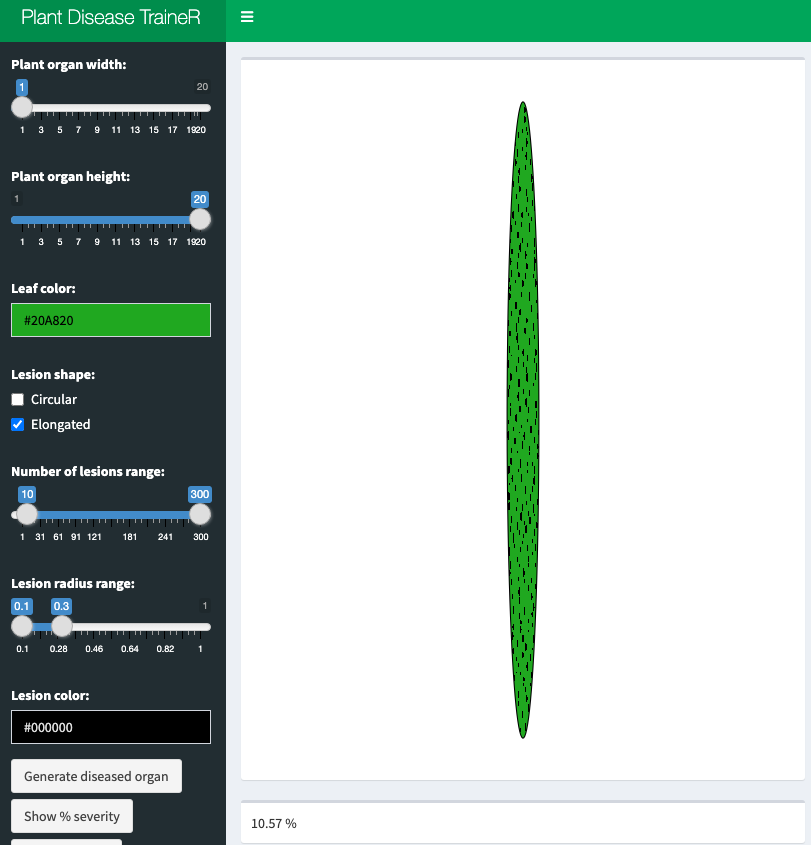
TraineR: a new app for improving accuracy of severity estimates
TraineR is a Shiny app designed to train users in the assessment of disease severity expressed as the percent area of the organ (leaf or fruit) affected by lesions.
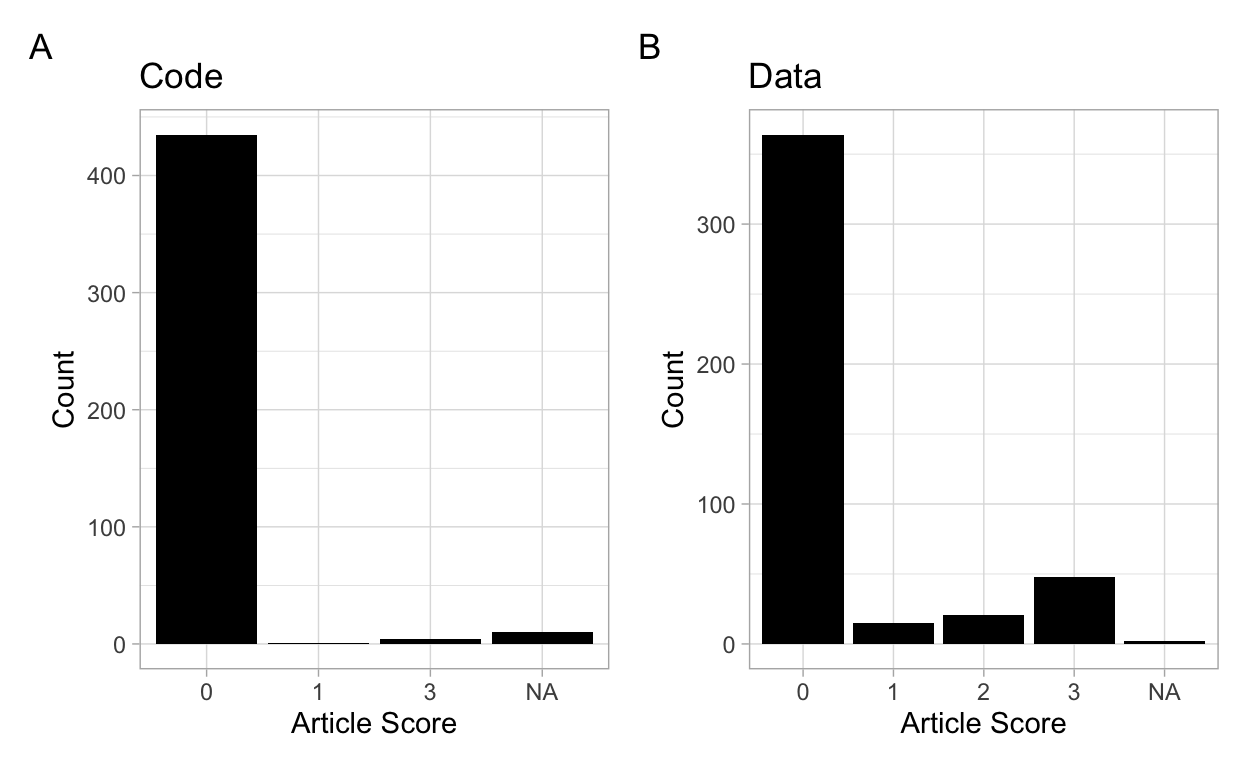
How Much Do We (Plant Pathologists) Value Openness and Transparency?
Our most recent paper examines code and data sharing practices in plant pathology and shares some ideas for what we can do to improve.
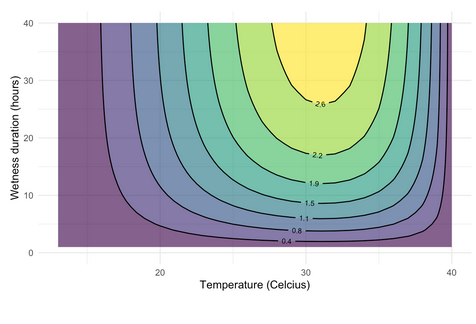
Fitting temperature- and moisture-based models to infection data using R
In many processes of the disease cycle, such as infection - one of the most critical components for disease forecasting - the interaction between temperature and the duration of moisture determine the amount of succesful infection sites and resulting disease severity. This post shows how to fit, in R language, a form of the Analytis Beta model to infection data as a function of temperature and an asymptotic regression model to infection as a function of moisture duration.

Polyphagous shot-hole borer in Western Australia – emergency response at the urban interface
Polyphagous shot-hole borer (PSHB; Euwallacea fornicatus) was detected in August 2021 by the Department of Primary Industries and Regional Development (DPIRD) in the Perth metropolitan area of Western Australia (WA). PSHB is an agricultural and environmental pest, with a wide host range (>400 amenity, fruit and nut tree species). This presentation will summarise PSHB biology and DPIRD response activities and explore some of the challenges and opportunities present at the urban forest- residential interface. Kylie will also speak to what it is like to work as a subject matter expert during a plant pest incursion.
Tracking changes from Rmd/Qmd Rendered Files Across Word Document Versions
Writing your manuscripts in RMarkdown or Quarto and rendering to Word for review? Do you need to be able to track your changes in Word in your response to reviews but don't know how to? Read on for how you can still use Rmd/Qmd and satisfy the requirements for tracked changes in your responses when resubmiting to journals for review.

Understanding plant-microbe- soil interactions to improve plant conservation and restoration outcomes
Although soil microbial communities, e.g., fungi and bacteria, are still largely considered a “black box”, their central role in ecosystem processes and function is indisputable. Despite the important role they play in carbon and nitrogen cycling, decomposition, and plant health there have been few attempts to incorporate soil microbial communities into conservation and restoration practice. In this talk, I will give an overview of my research pertaining plant- microbe interactions and how it has the potential to improve our understanding of plant-microbial dynamics in diverse ecosystems. Better understanding plant-microbial dynamics will also inform about the ecosystem-level processes and ecosystem health, e.g., decomposition rate, nutrient cycling, and plant nutrient acquisition. Finally, I will bring examples of our work that has practical applications for improving plant conservation and restoration outcomes.

Advances in understanding the host-mediated defence mechanism in wheat against rust infections
Sambasivam (Sam) Periyannan is a Scientist at the Agriculture and Food division of CSIRO and an Adjunct Associate Professor at the University of Queensland, Australia. After completing his PhD (Agriculture) at the University of Sydney in 2011, Sam started his scientific career as a postdoctoral fellow (2011-2016) at CSIRO, where he eventually became an independent scientist in 2016. Between 2017-2019, Sam took a secondment position at the Australian National University (ANU) to complete his ARC DECRA project. He also served as the “Crop Resistance Genes” team leader at CSIRO from 2019 to 2021. Sam’s research interest is centred on molecular genetics and pathology, focusing on cereal crops and rust pathogens. Apart from publications in top journals such as Science and Nature Biotechnology, Sam is the recipient of prestigious awards such as the Goldacre award from the Australian Society of Plant Scientists and Chairman’s Medal from CSIRO. Currently he is a Senior Editor for Plant Disease and Associate Editor for BMC Biology and Frontiers in Plant Science.
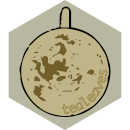
Estimating leaf temperatures for spatial epidemiology
How to obtain leaf temperature estimates world-wide using the R packages, tealeaves and nasapower.
Calculating AUDPS using Julia
Calculating AUDPS in R and Julia.
Introducing Julia to Plant Pathologists
Do you feel the need for speed?

Adaptation of a clonal pathogen - The story of Ascochyta rabiei in Australia
Ascochyta rabiei, a pathogenic fungus and the causing agent of Ascochyta blight of chickpea, is represented by a highly clonal population in Australia, due to the presence of only a single mating type. This presentation will summarise the current knowledge of the patterns and trends found in this unique population structure, as discovered by genetic analysis of isolates collected between 2013-2020 as part of ongoing monitoring studies led by Prof. Rebecca Ford at Griffith University.

RNAi vaccines for sustainable plant protection
RNA interference (RNAi) vaccines are an emerging environmentally-friendly crop protection platform that are effective against agricultural pests and pathogens. The approach involves applying pathogen-specific double-stranded RNA (dsRNA) to the host plant to trigger RNAi and silence targeted pathogen genes, inactivating the pathogen and protecting the plant. When applied as BioClay(TM), in combination with clay particles that bind dsRNA, RNAi vaccines can provide plants with protection for more than 20 days, making a single spray a commercially feasible and lasting approach to protect crops.

Sources and quantification of flower blight pathogens in macadamia
Raceme blights also known as flower blights are used to describe diseases and disorders of macadamia inflorescence worldwide. Flower blights reduce fruit set and control measures are limited. Knowledge of the disease cycle and epidemiological parameters is required.

The interesting things we find during cotton disease surveillance in Queensland
Cotton is susceptible to many yield-limiting diseases. To understand the importance and impact of diseases present, disease surveys are conducted early and late season across all cotton growing regions to monitor the distribution and incidence of diseases. The surveys also maintain the surveillance for exotic pathogens. Surveys have been conducted in Queensland for 20 consecutive years. Data provided by annual surveys have shown the relative importance of each of the diseases in a region and that specific diseases continue to be a challenge to manage, resulting in significant yield losses.

The power of electrochemical biosensors in Botrytis Grey Mould pathogen diagnostics
Plant pathogens cause enormous economic loss and potential unintended environmental impacts through excessive or off-target chemical management practices. Thus, early diagnosis and quantitation of the causal pathogen species for accurate and timely disease control is crucial. Botrytis Grey Mould (BGM), caused by Botrytis cinerea and B. fabae, can seriously impact production of temperate grain legumes separately or within a complex. Accordingly, several immunogenic and molecular probe-type protocols have been developed for their diagnosis, but these have varying levels of species-specificity, sensitivity, and consequent usefulness within the paddock. To substantially improve speed, accuracy and sensitivity, advanced nanoparticle-based biosensor approaches have been employed and through translation of human biomedical diagnostics tools. These new tools provide accurate and quantitative diagnosis in the field and long before visual symptoms appear. This presentation will outline progress towards the development and validation of BGM species-specific molecular-electrochemical coupled diagnostics, and next steps towards their incorporation in IDM strategy.

Linear modelling of soil temperature effects on root lesion nematode population densities in R
Pratylenchus thornei, the root-lesion nematode, is widely distributed in wheat (Triticum aestivum) growing areas of many countries and is of particular concern in sub-tropical environments. These nematodes penetrate roots to feed and reproduce in the root cortex leading to loss of root function, which affects nutrient and water uptake of nutrients and water causing nutrient deficiency and water stress. In the original paper the population response of P. thornei in Queensland, Australia wheat to temperature is modelled using a linear and quadratic equations by Thompson (2015). The study aimed to investigate the effects of soil profile temperatures after different sowing dates on reproduction of the nematodes in susceptible and moderately resistant wheat cultivars in the subtropical grain region of eastern Australia. This document recreates the models for population densities of P. thornei as described in the original paper.

Characterization of Pyrenophora teres isolates and mapping of virulence genes
Characterization of _Pyrenophora teres_ isolates and mapping of virulence genes _Pyrenophora teres_ is the causative agent of net blotch of barley and one of the most economically important fungal pathogens affecting the Australian barley industry. Buddhika discusses her PhD researsch on genetic characterisation and identification of virulence genes of a barley fungal pathogen, _Pyrenophora teres_. Presented for the Queensland Chapter of the Australasian Plant Pathology Society (APPS).

Diagnosis of African Citrus Greening
African citrus greening (or also known as African greening) is a serious, debilitating, insect-transmissible citrus disease associated with the heat sensitive, phloem-limited, non-cultured bacterial species _Candidatus_ Liberibacter africanus (CLaf). To fill the Australian capability and capacity gaps for diagnostics of African greening, I undertook a two-week diagnostic training at Citrus Research International (CRI), Nelspruit, South Africa in June 2019. This presentation will show what I had gained from the training. Presented for the Queensland Chapter of the Australasian Plant Pathology Society (APPS).

Mycorrhizal fungi improve yield, biomass and nitrogen fixation by rhizobia but increase population densities of the root-lesion nematode Pratylenchus thornei in mung bean
Mung bean is a short-season, high-value legume crop in eastern Australia that is susceptible to the plant-parasitic root-lesion nematode _Pratylenchus thornei_. It also forms associations with the beneficial soil-borne arbuscular mycorrhizal fungi (AMF) which increases plant uptake of phosphorus (P) and zinc (Zn) in exchange for photosynthates. Interactions with AMF and biotic stressors in previous studies suggested that AMF may induce a biocontrol effect to reduce symptom severity and Pratylenchus population density in crops. Presented for the Queensland Chapter of the Australasian Plant Pathology Society (APPS).
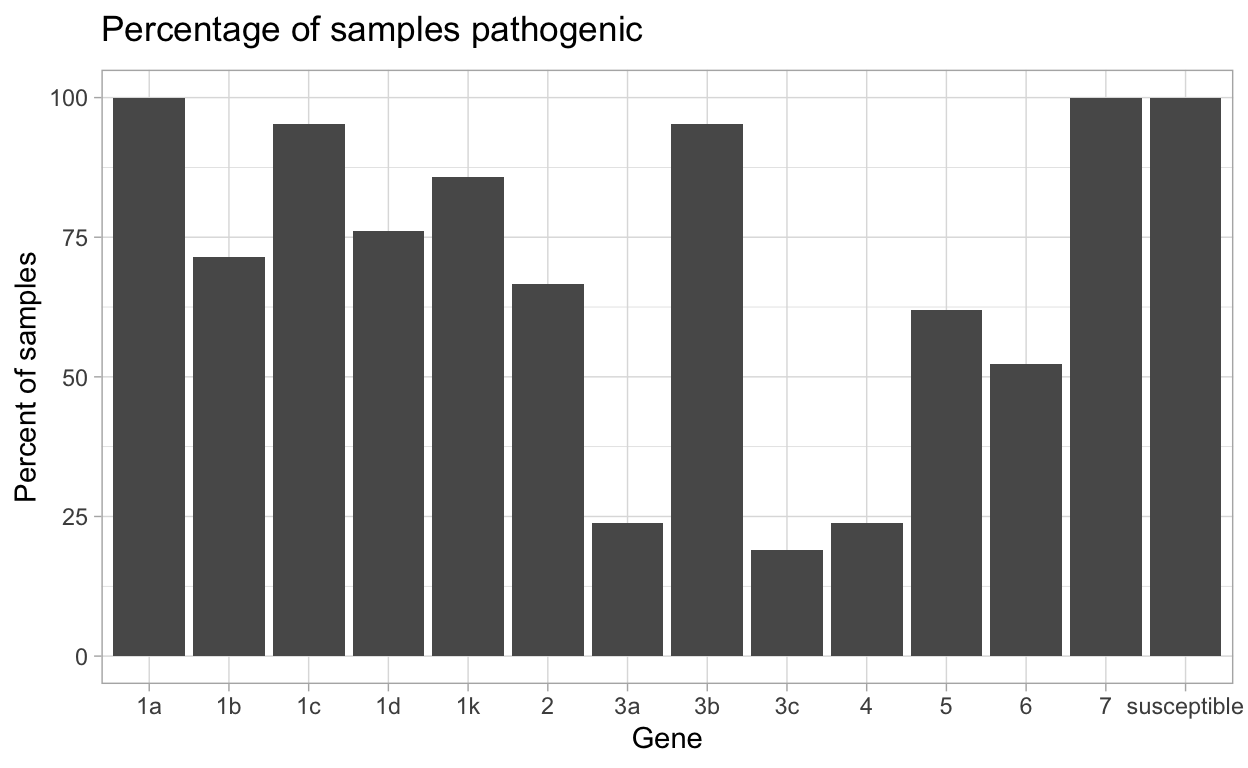
{hagis}, an R package for analysis of pathogen gene-for-gene virulence data
{hagis} is a new R package, designed for analysis of pathogen gene-for-gene virulence data that is collected from pathogen surveys or experiments. This package provides users with tools to explore their virulence data and identify the distribution of susceptible reactions, pathotype complexity, pathotype frequency as well as alpha and beta-diversity measurements in an easy-to-use format. Austin shares how this package came into being and how it's being used in this guest post.

Fusarium wilt of banana – an inevitable disease
Professor Elizabeth Aitken presents her group's work on Fusarium wilt, particularly on banana where host resistance, pathogen diversity and etiology are being explored for the Queensland Chapter of the Australasian Plant Pathology Society (APPS).
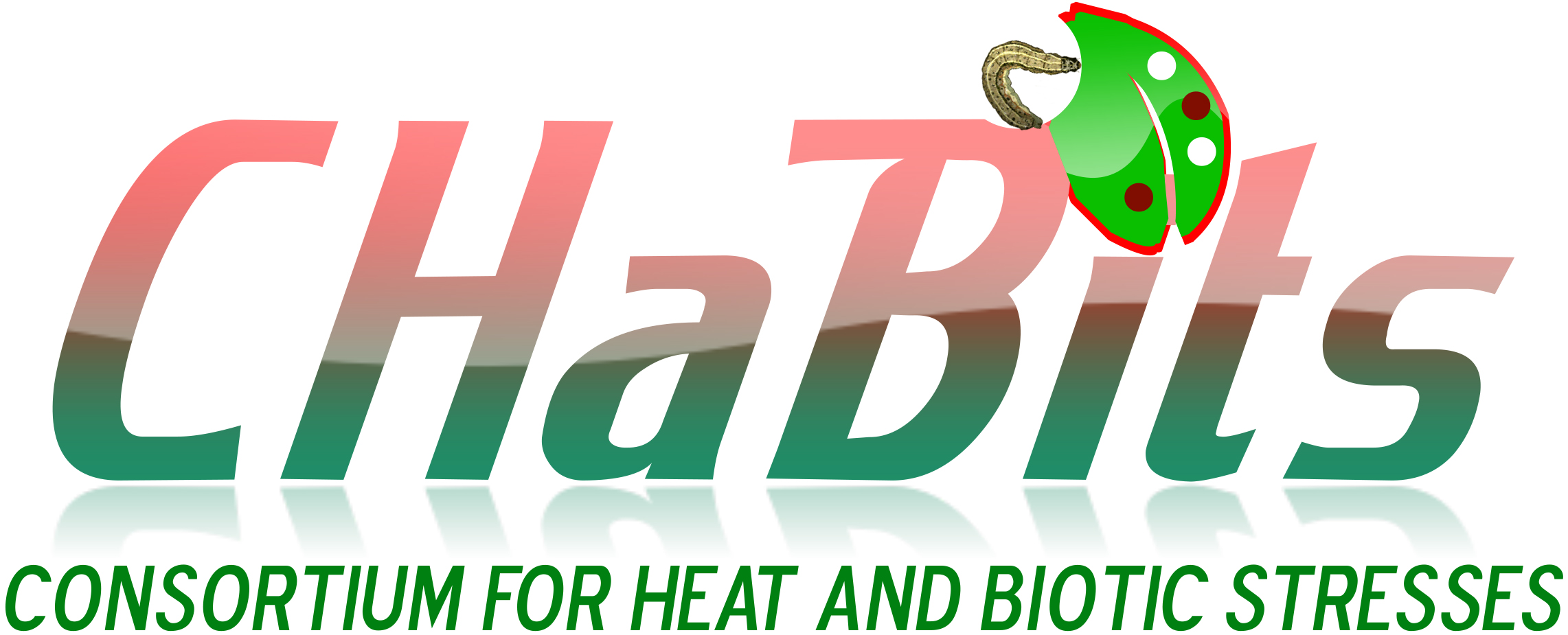
Climate change will create winners and losers in the fight against plant disease
Adam Sparks and Paul Melloy recently joined CHaBits (Consortium for Heat and Biotic Stresses) to discuss the effects of climate change on plant disease. CHaBits have graciously hosted the seminar recording on their YouTube.

Design and Application of Specific PCR Ramularia collo-cygni detection Identifying fungicide resistance in Pyrenophora teres
Noel Knight began his research career at the University of Southern Queensland in Toowoomba in 2007, investigating pathotypes of the spot blotch pathogen of barley and describing disease symptoms of Fusarium crown rot on wheat. He subsequently spent two years at Cornell University in New York State researching leaf diseases of beetroot. Noel joined the Fungicide Resistance Group in the Centre for Crop and Disease Management at Curtin University in 2020, undertaking projects involved in detecting and characterising fungicide resistance in the barley net blotch pathogens.
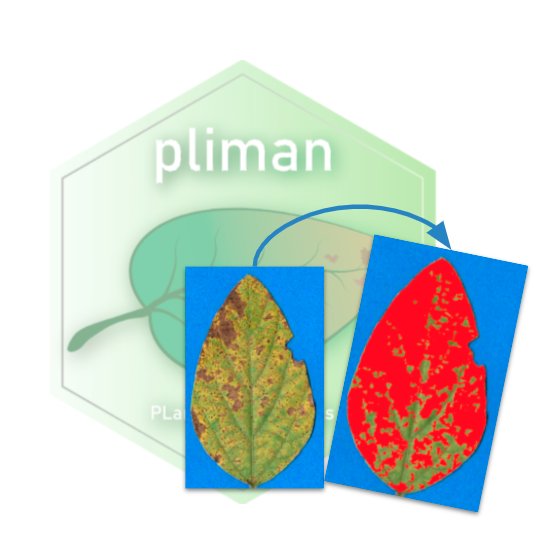
Measuring plant disease severity using the pliman R package
pliman (PLant IMage ANalysis) is an R package for the analysis of images of plants, mainly leaves, that offers a function for measuring plant disease severity. In this post I will demonstrate the use of pliman for determining severity on leaves affected by soybean rust as a case study.

Meta approaches for robust epidemiological inferences in plant disease management research
Seminar presented by Dr. Emerson Del Ponte (Universidade Federal de Viçosa, Brazil) for the Department of Botany and Plant Pathology, Oregon State University, on May 20 2021.
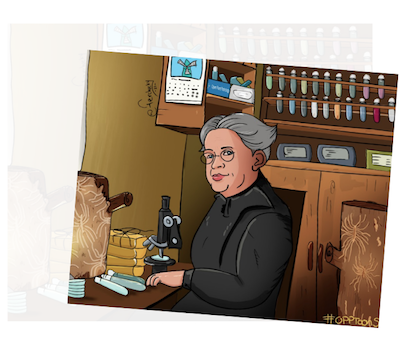
Johanna Westerdijk: curating culture in the discipline of plant pathology
In this second #OPPToons, a tribute to a pioneering and inspiring woman in plant pathology, Prof. Johanna Westerdijk (1883-1961), the first female Professor in the Netherlands, from the University of Utrecht.
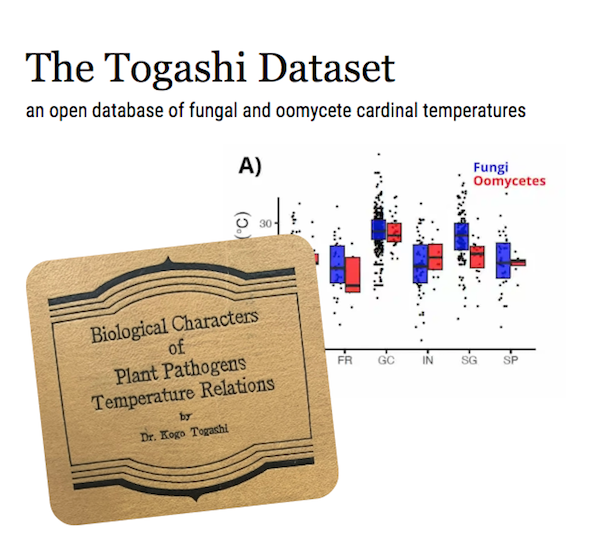
The Togashi data set, an open database of fungal and oomycete cardinal temperatures
An open database providing cardinal temperatures (minimum, optimum and maximum) for various physiological and growth processes of plant pathogenic fungi and oomycetes reported in Togashi (1949).
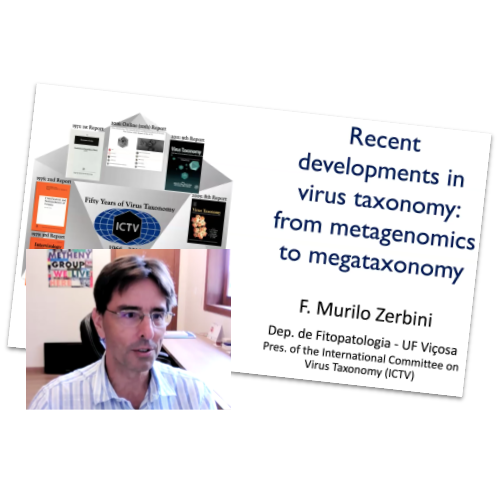
Recent developments in virus taxonomy: from metagenomics to megataxonomy
Seminar presented at the Department of Plant Pathology, University of Kentucky on March 29th 2021, by Prof. Murilo Zerbini from the Departamento de Fitopatologia, Universidade Federal de Viçosa, Viçosa, Brazil. Dr. Zerbini is currently the President of the International Committee on Virus Taxonomy (ICTV).
RSSCdb, a database for tracking the global spread of Ralstonia solanacearum sequevars and strains
RSSCdb is a database of characterized strains of Ralstonia solanacearum species complex strains whose data have extracted from the peer-reviewed articles that include the geographic, host of origin, year, and phylogenetic classification (phylotype/sequevar). The project was developed to provide UC Davis undergraduate researchers with a remote research experience.
ClubrootTracker, an open database for tracking the presence of clubroot and Plasmodiophora brassicae worldwide
Clubroot is a devastating disease caused by the soil-borne protist *Plasmodiophora brassicae* putting at risk Brassicas worldwide. An open database to record the presence of clubroot and *Plasmodiophora brassicae* reported by researchers, industry and growers.
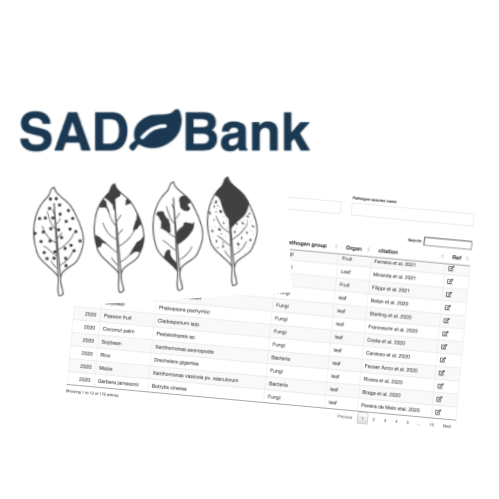
SADBAnk - a database of standard area diagrams of plant disease severity
SADBAnk is a curated collection of studies on Standard Area Diagram set (SADs), pictorial representations of disease symptoms and/or signs in a plant organ where each diagram depicts a percent diseased area. They are designed in a wide range of styles and are used as tools to use during or prior to visual assessments of disease severity to “calibrate” a rater’s eye and improve accuracy, precision and reliability of the estimates.
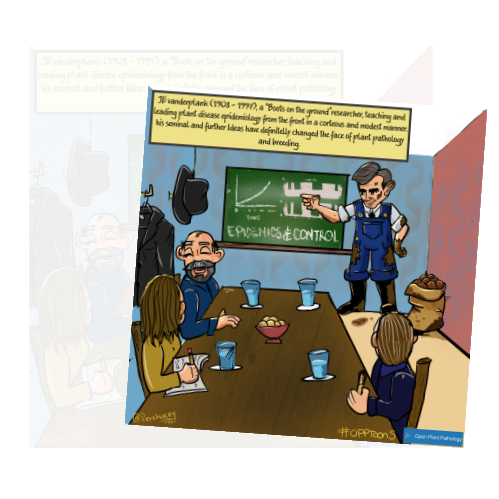
Vanderplank: contributing an epidemic proportion to plant health
We are starting our #OPPtoons series with one of the famous plant pathologists responsible for providing the grounds for establishing the discipline of plant disease epidemiology, James Edward Vanderplank (VDP; 1908 - 1997).
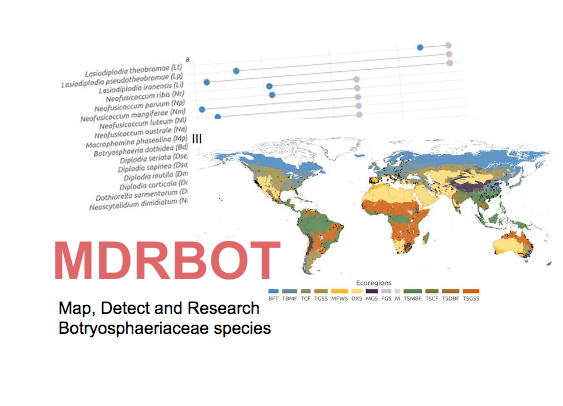
MDRBOT– Map, Detect and Research Botryosphaeriaceae species
A freely available database that can be consulted through an interactive and online application. The current release (version 1.0) contains 14,405 cured isolates and 2989 literature references of 12,121 different host–fungus interactions with 1692 different plant species from 149 countries.
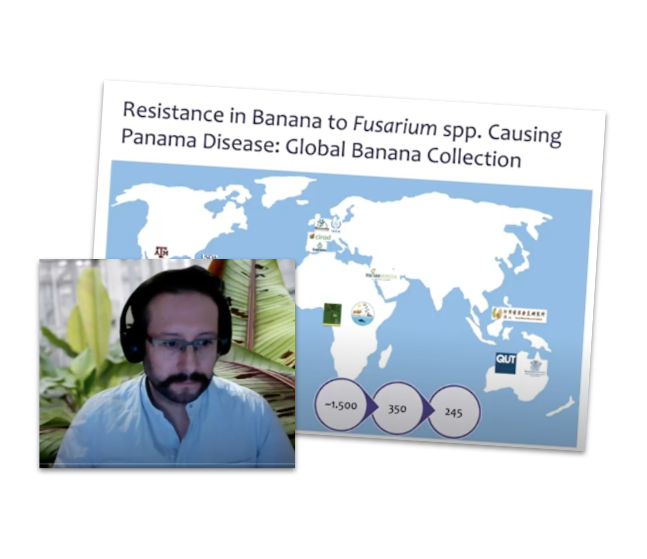
Fusarium wilt of banana: a re-emerging disease that threatens banana production
Seminar presented at the Department of Plant Pathology (University of Kentucky). Dr. Fernando Garcia-Bastidas (Keygen) digs into the history of epidemics of Panama disease (Race 1) that devastated Gros Michel bananas in the previous century; illustrates how Cavendish saved the industry and the re-emergence of the threat; and discusses possible solutions for disease management focusing on the plant breeding efforts.
FGSCdb, an open database for tracking the global spread of species and chemotypes
An open database of characterized strains of Fusarium graminearum species complex species whose data have been gathered directly from researchers or extracted from the peer-reviewed articles whenever the geographic, host of origin, year, and phylogenetic species and chemotypes.

{epifitter}, a tool for analysing plant disease epidemics
{epifitter} is a very young package, targeting students and researchers dealing with simulated or empirically-derived data collected from surveys or experiments. It provides a set of tools for aiding in the visualization and description of DPCs as well as fitting and comparing epidemic models and simulating epidemic data.
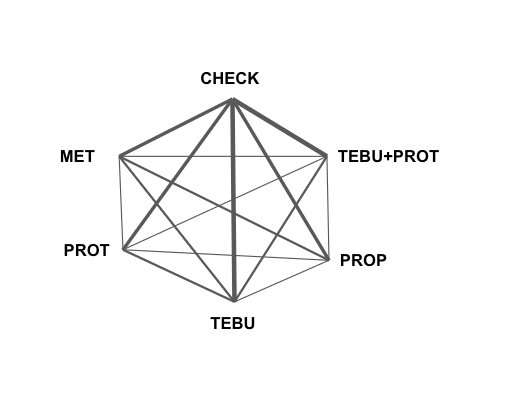
Network meta-analysis in R
Meta-analysis (MA) has gained more popularity in Plant Pathology. Among the methods, network meta-analysis has been thoroughly presented to plant pathologists in a recent paper. In this post, I reproduce part of the analysis shown in that paper which was conducted using SAS. Although the results are not identical, they are very similar.

Rubber leaf drop - in defence of Pestalotiopsis
Seminar given by Dr. Anthony Young for the CCH-USQ Seminar Series. Dr. Young is a Senior Lecturer in Crop Protection at The University of Queensland, Gatton Campus. In this seminar, he will explore the epidemiology of rubber (_Hevea brasiliensis_) leaf drop in Sumatra and Malaysia, presenting field work undertaken in 2019 and with reference to real-world examples of the role of climate in what we term 'disease.'

An interview with Dr. BananaMan García: on being bananas about bananas
Get to know our newest member of the OPP team, Dr. Fernando Alexander García-Bastidas, a Colombian researcher in Wageningen (NL) at KeyGene leading banana breeding program focusing on Panama Disease. He is also known as Dr. Bananaman, the creator of the #bananatoons. Fernando will be responsible for creating open digital art useful for plant pathology teaching and outreach.
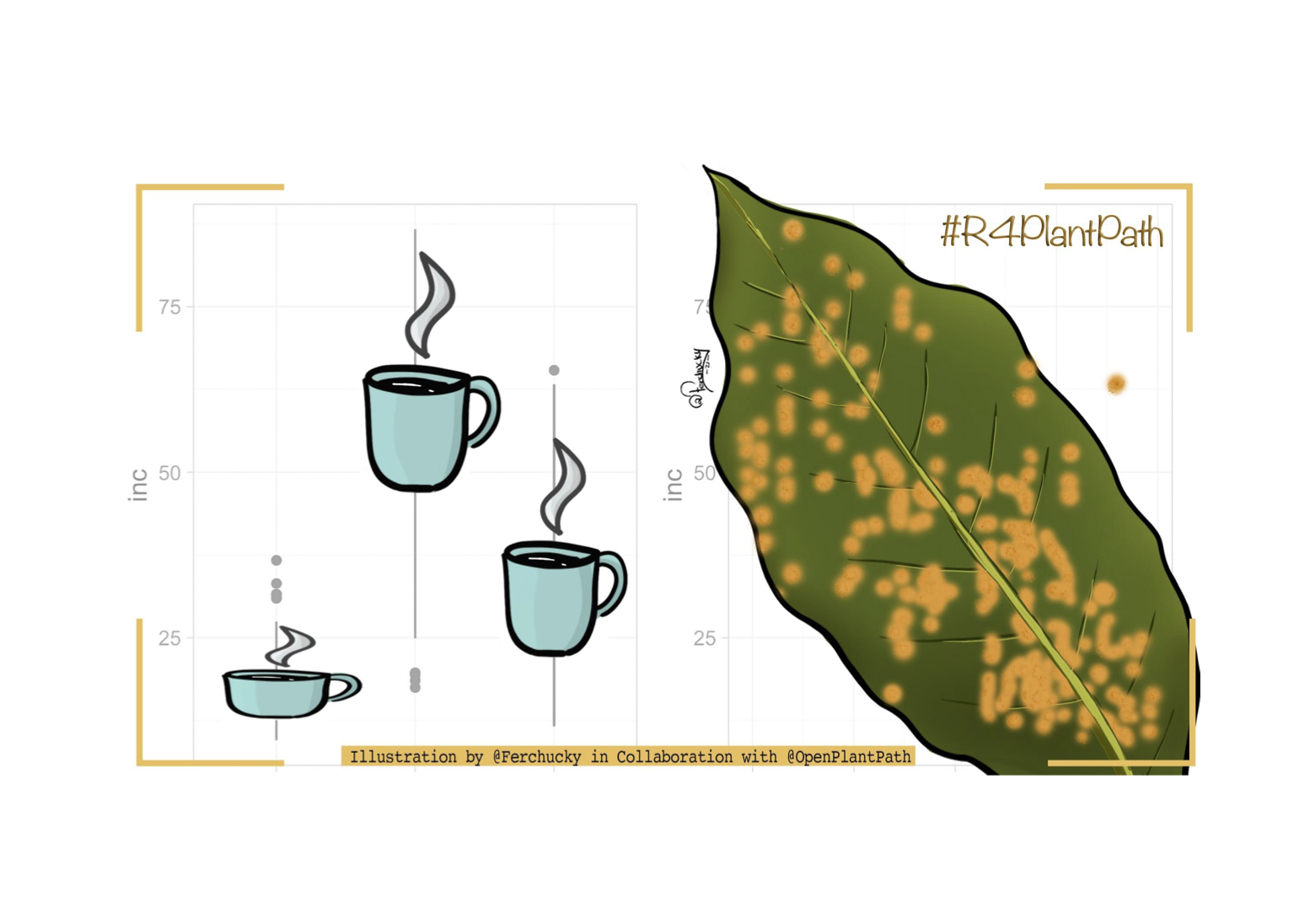
A multi-panel figure for coffee leaf rust
In scientific publishing, it is a good visualization practice to present more than one plot (graph, chart or images) in the same figure, not only to improve communication and comparison but also decrease the number of total figures referenced in papers. I use a coffee leaf rust data set to demonstrate how to make these multi-panel figures, using the R package patchwork to produce the most common multi-panel figures for scientific papers.
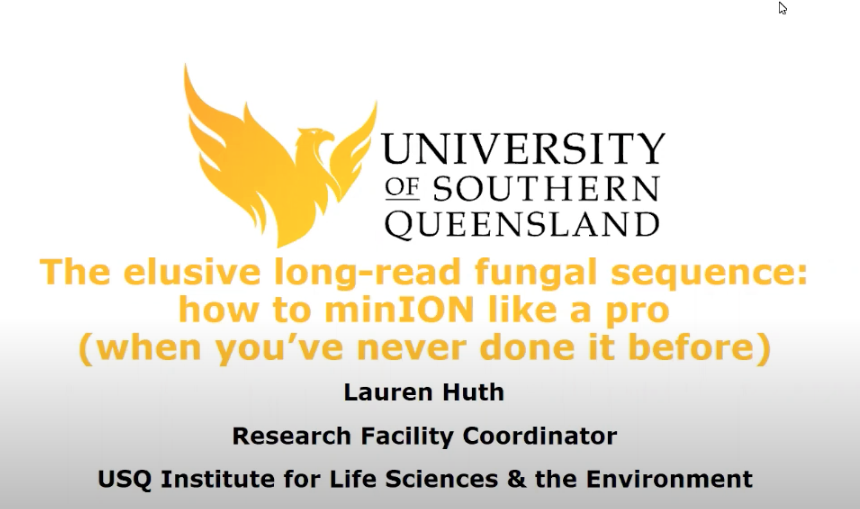
The elusive long-read fungal sequence: how to minION like a pro (when you’ve never done it before)
Research seminar presented by Ms. Lauren Huth to the Center for Crop Health, University of Southern Queensland. The rapid development of microbial genome sequencing methods in the last decade has revolutionized whole genome sequencing and has become the standard for many molecular typing applications in research. Largely driven by the development of high-throughput, low cost, second generation sequencing methods, the industry has become familiar with Illumina as the most widely used sequencing platform for microbial genomics.
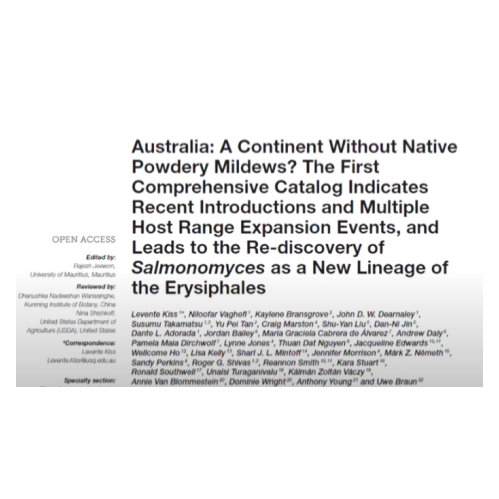
Deciphering the origin of powdery mildews in Australia. Implications for plant biosecurity
Seminar given by Prof. Levente Kiss (University of Southern Queensland). Powdery mildews are widespread obligate biotrophic fungal plant pathogens, comprising over 900 species that infect more than 10,000 plant species globally. The symptoms caused by these fungi are easy to spot, but the fungi themselves are difficult to handle, and some are difficult to identify.
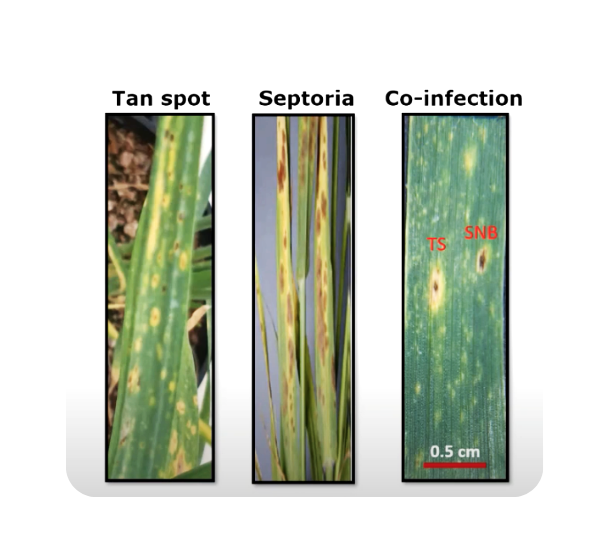
A tale of two crop diseases
Seminar given by Dr. Araz Solman from the Queensland Department of Agriculture and Fisheries. Short abstract: Research into plant-pathogen interactions has historically taken a simplified approach involving a single host and a single disease. However, in natural and agroecosystems, plants are frequently co-infected with several pathogen species or genotypes, exhibiting complexities not captured by the widely used single disease approach. In this seminar, I will address the complex dynamics of plant co-infection by focusing mainly on a tripartite pathosystem consisting of wheat as the host and two major fungal pathogens: _Pyrenophora tritici-repentis_ (Ptr) and _Parastagonospora nodorum_ (Pan).
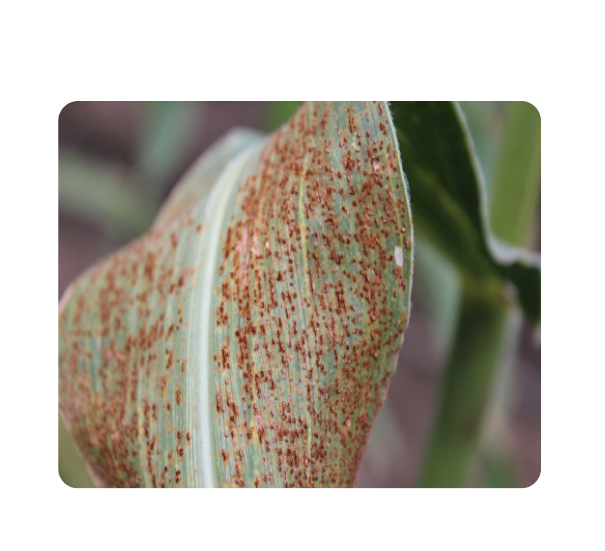
Effectiveness and expression of resistance in maize to isolates of Puccinia sorghi from Eastern Australia
Open Plant Pathology Virtual seminar given by Ms. Aurelie Quade from the University of Southern Queensland. The vulnerability of the Australian maize industry to Puccina sorghi is currently unknown. Maize is grown across a range of agro-ecological regions in Australia and the effectiveness and stability of deployed Rp genes has not been examined.
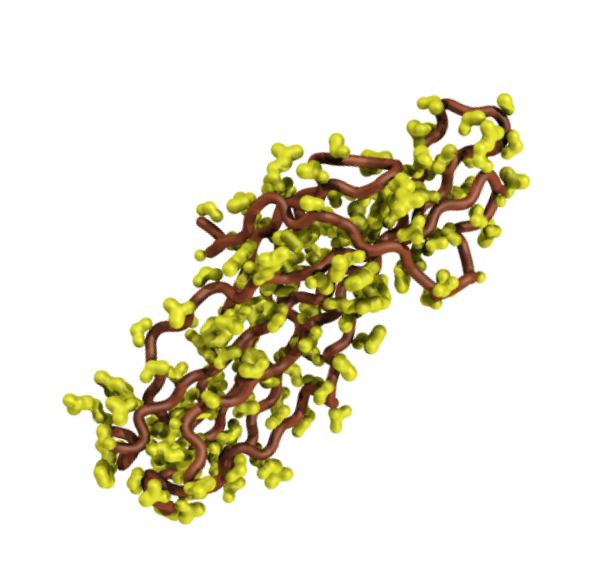
Crystal structure of Tox3 - a unique effector fold and insights into Kex2 protease processing of fungal effectors
Virtual seminar given by Dr. Simon Williams from Australian National University. Plant pathogens cause disease through secreted effector proteins, which act to modulate their hosts physiology and promote infection. Typically, the sequence of effector proteins provides little functional information and further targeted experimentation is required. We look to utilise structural biology and biochemical approaches to help us understand effector function.
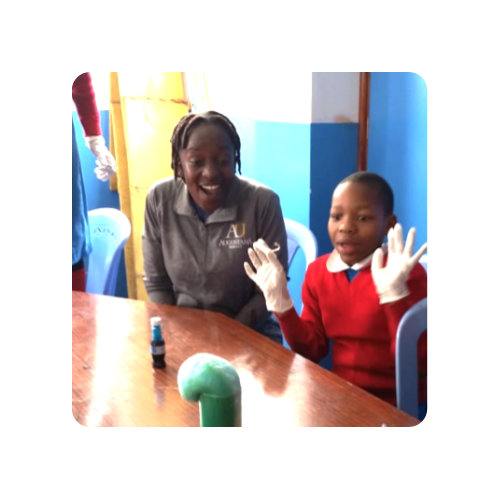
OPP Interviews: Dr. Sally Mallowa from Augustana University
Post seminar interview with Dr. Sally Mallowa, an Assistant Professor of Biology at Augustana University (South Dakota, USA). Sally delivered a talk on, Technology driven cassava pest management on the 4th of May 2020
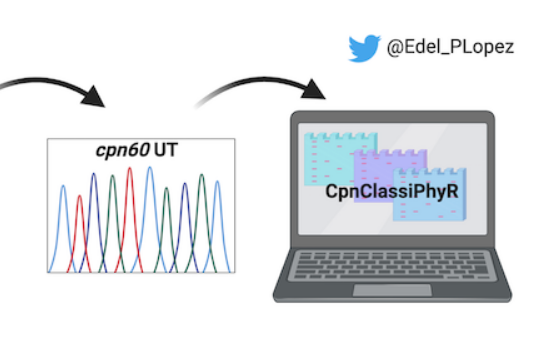
cpn60UT: the perfect marker to identify and characterize phytoplasmas?
Seminar given by Dr. Edel Pèrez-Lòpez - Université Laval. Abstract: Phytoplasmas taxonomy is very complex. Besides genus ('_Candidatus_ Phytoplasma'), phytoplasmas are also classified into groups and subgroups based on the RFLP pattern obtained after digesting the F2nR2 sequence (into the 16S rRNA operon) with 17 restriction enzymes. Many other taxonomic markers have been suggested in order to simplify this classification scheme.
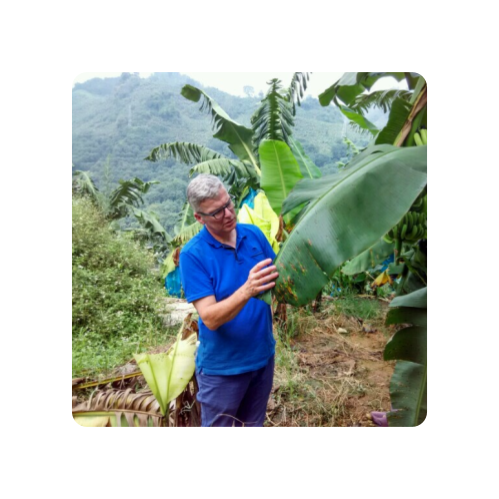
OPP Interviews: Prof. Gert Kemma from Wageningen University & Research
Post seminar interview with Dr. Gert Kema (Wageningen University & Research), is the professor leading research at the Laboratory of Phytopathology. A focus on septoria tritici blotch of wheat for ~25 years set Gert on a path to work on banana as a result of the relationship between the causal fungi, _Mycosphaerella graminicola_, now known as _Zymoseptoria tritici_ and _Mycosphaerella fijiensis_ now known as _Pseudocercospora fijiensis_, associated with black sigatoka.
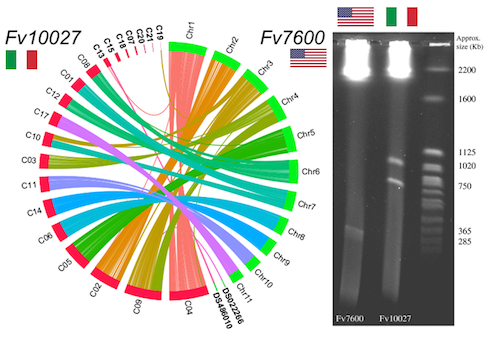
Evolution of mini-chromosomes in Fusarium
Seminar given by Dr. Luigi Faino (University of Rome La Sapienza) on Fusarium verticillioides, a maize pathogen that causes millions of dollars in loss every year due to the production of mycotoxins, namely the neurotoxic and carcinogenic fumonisins. Dr. Faino investigated the F. verticillioides (Fv) strain 10027 which is an Italian isolate and it produces high amount of fumonisin B1.
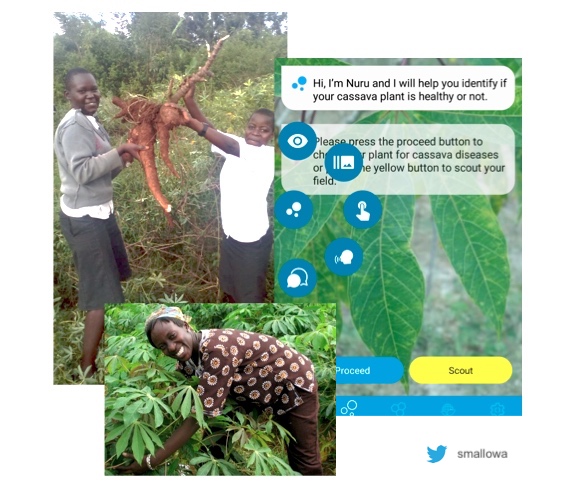
Technology driven cassava pest management
In the recent past, a priority of many national research programs, international research institutions, non-governmental organizations, and funding agencies, has been focused on finding novel solutions to the complex constraints to cassava production.

Post-seminar interview: Dr. Peter Solomon from The Australian National University
A post-talk interview with Dr. Peter Solomon, a specialist in the field of wheat biosecurity. Peter is a dedicated researcher, committing over twenty years of research to dissect the intricate interactions of effector and host defence proteins.
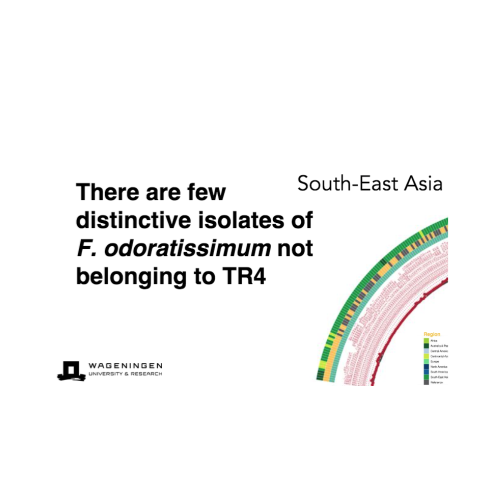
The ongoing pandemic of Tropical Race 4 threatens global banana production
Dr. Kema reviews their research on the understanding of the phylogeography of TR4, and discuss on the broad genetic potential of the crop for breeding as well as options for disease management to avoid a repetition of history.
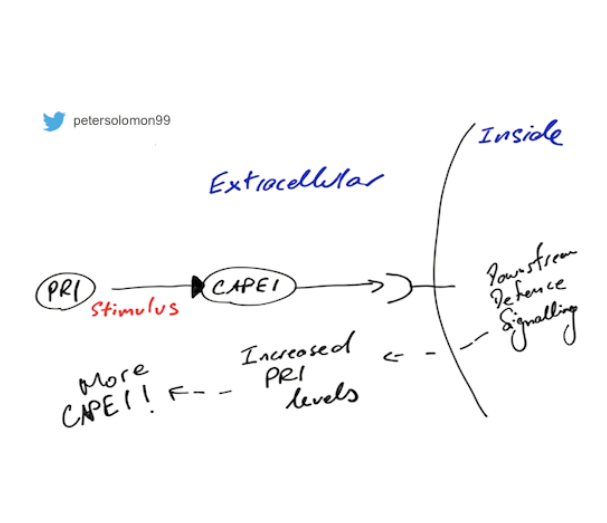
How the study of necrotrophic effectors advanced our understanding of the enigmatic PR-1 protein
Seminar given by Dr. Peter Solomon (The Australian National University). It had long been thought that necrotrophic plant pathogenic fungi use a barrage of lytic enzymes to break down host cells releasing nutrients for growth. However, in recent years it has emerged that some necrotrophic fungi facilitate disease through a strict gene-for-gene mechanism as observed in biotrophic pathogens.

Research Compendium: High-Resolution Satellite Imagery for the Detection of Soybean Sudden Death Syndrome
In this inaugural post, we showcase a reproducible example of research conducted by Dr. Muhammad Mohsin Raza, a recent graduate from Iowa State who worked under the supervision of Dr. Leonor Leandro, describes his research, the tools he used and how to reproduce his work. His project is a wonderful narrative, and one of many ways to build a research compendium to encourage reproducibility of the analysis and communication of the findings.

Evolution is not static: understanding factors that govern pathogen-host diversity
A post-talk interview with Dr. Remco Stam, a specialist on host-pathogen genetic diversity and (co)evolution. Remco is a forward-thinking researcher, with a humble yet passionate approach to understanding (co)evolution between host plants and their pathogens.
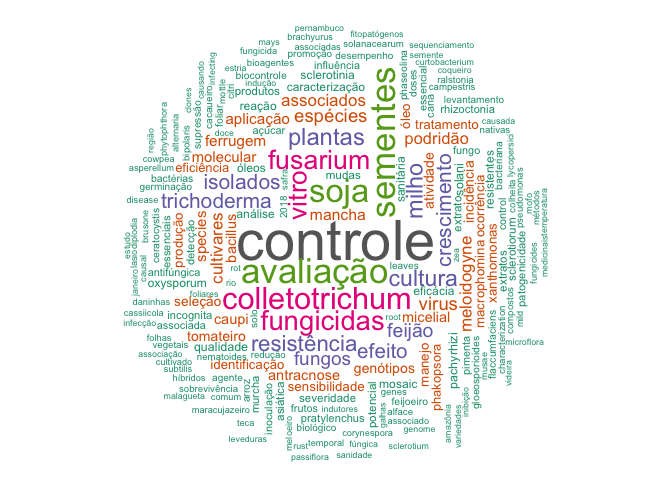
What are Brazilian plant pathologists doing? A text-analysis of scientific poster titles
A text analysis in R to look more closely at what areas Brazilian plant pathologists are working in based on posters at the Brazilian Society of Plant Pathology meeting.
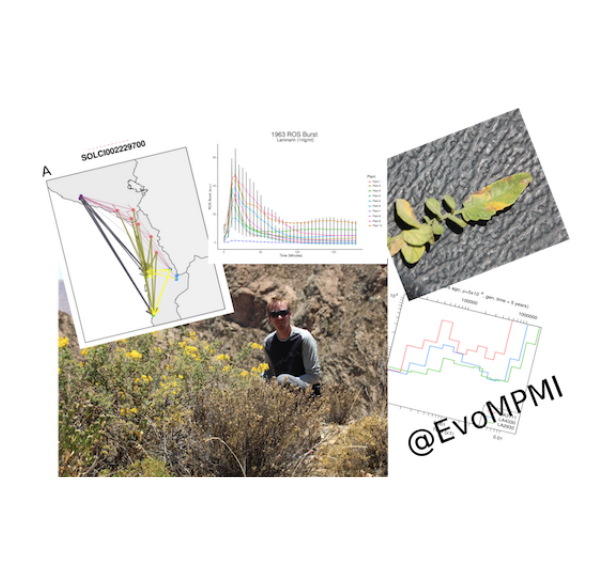
The diversity and molecular evolution of plant defence against pathogens in nature
Plant pathogen defence responses are often studied in model systems or in agricultural settings. However, in nature plants also encounter a large variety of pathogens. Interestingly, in natural systems this seldom leads to epidemics. One possible reason for this is the high amount of genetic variation that can be found in natural plant populations.

Clubroot of brassicas, an old but still poorly understood disease on the rise!
Dr. Susann Auer a postdoc at Technische Universität Dresden (Dresden, Germany), delivered the first OPP Virtual Seminar on the 31st of March on the molecular response of Clubroot infected plants to the endophytic fungus Acremonium alternatum. I had the privilege to get to know her and her work a little better. Dr. Auer is a passionate researcher, who shows care towards her students and is thoughtful in considering her fellow researchers.

OPP Virtual Seminar: delivering scientific talks without barriers
After two years promoting and supporting openness, transparency and reproducibility in our field, we are very proud to announce a new exciting project: the Virtual Seminars (aka science webinars), a new venue for delivering scientific talks in plant pathology-related topics. The idea was brought up by Dr. Benjamin Schwessinger (Australian National University), a prominent representative of scientists advocating for urgent changes in scientific meetings, including replacement of the current model by digital conferences. We had a quick chat with Benjamin who further stressed why he believes the timing is perfect to start experiencing virtual talks in plant pathology, a trend that is spreading into other scientific communities
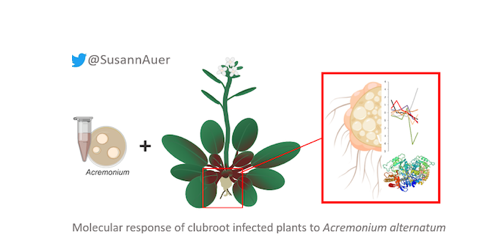
Molecular response of clubroot infected plants to the endophytic fungus Acremonium alternatum
In our first OPP Virtual seminar we have Dr. Susann Auer - Postdoc Technische Universität Dresden, speaking about the clubroot, a disease that continues to cause economic losses in Brassica crops worldwide, sustainable control measures are not in sight. The clubroot pathogen persists in soils in the form of durable resting spores which infect new crops every consecutive year.

Reproducible Reports and Research Using R
Workshop taught by Adam H. Sparks, Nick Tierney, Paul Melloy, and Nirodha Weeraratnee at the Australasian Plant Pathology Society Conference 2019

Are you getting ready for ensuring reproducibility in Plant Pathology? We want to hear!
We are calling for participation in a survey. Please donate only five minutes of your time to answer a survey questionnaire with 16 multiple choice questions about your current practices related to organisational procedures, data management, analytical workflows and sharing of scientific information.
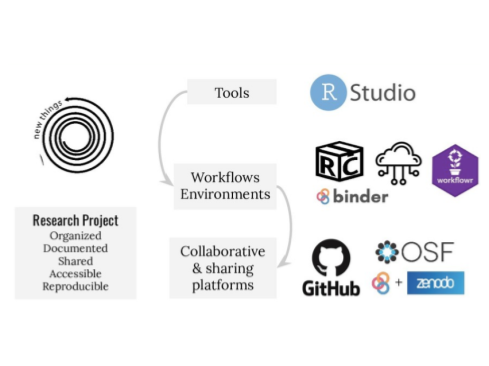
Get your research project organized, shareable and reproducible using R
The importance of sharing data and computational code has been highlighted extensively to promote transparency and replication of scientific results. Data and code sharing practices are rare in the plant pathology, but they are expected to increase in the near future. It is urgent that plant pathologists get training in how to organize their research in a way that promotes effective project management, reproducibility, collaboration and sharing of results.

Breaking down barriers between remote sensing and plant pathology
This is a preprint of a Letter to Editor of Tropical Plant Pathology by Heim _et al._ on the challenges and potential solutions in the context of application of remote sensing in plant pathology.
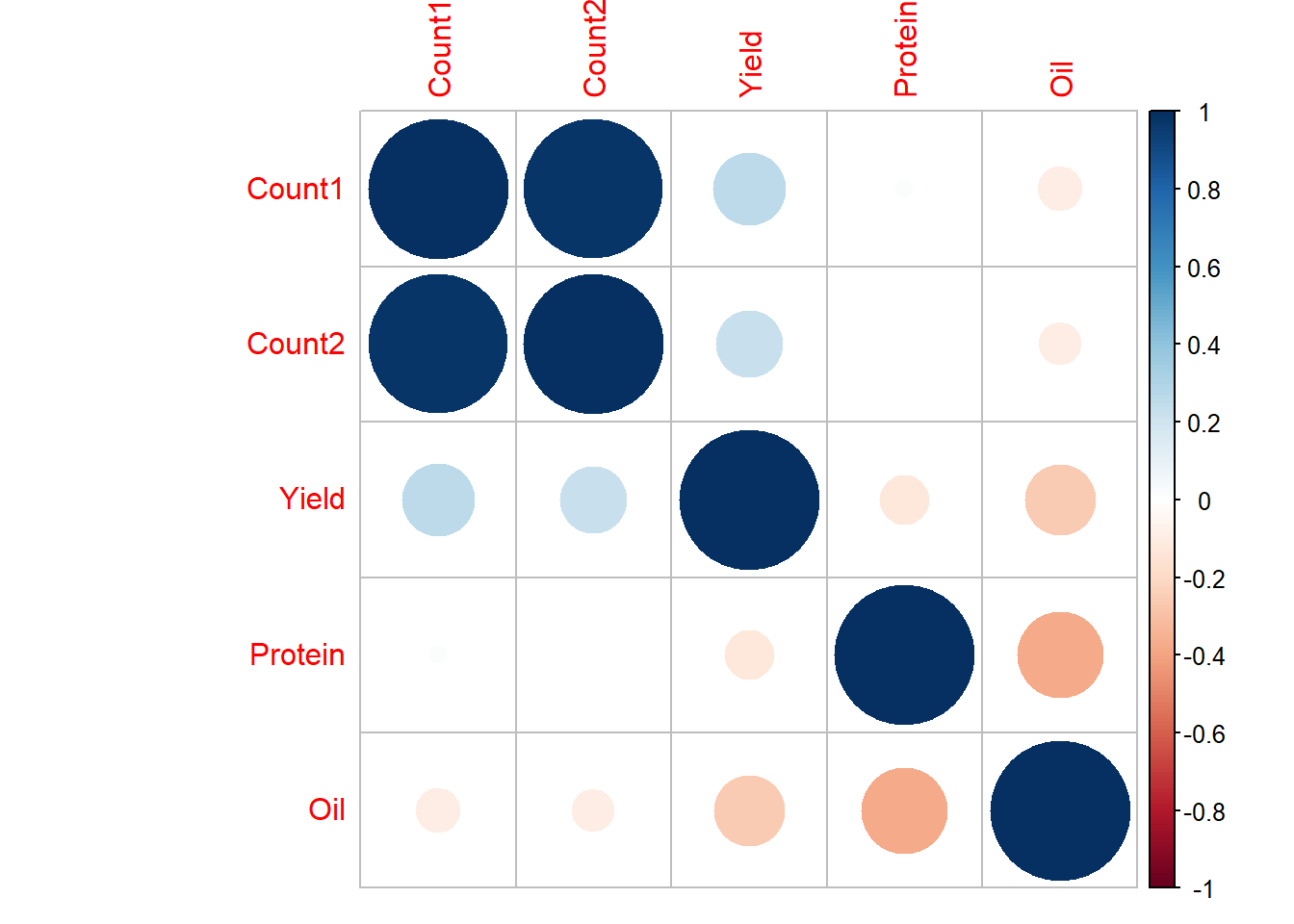
Modeling tools and techniques using R
In this workshop, we will present an overview of different modeling approaches that are available in the R language and environment for statistical and graphical computing. We will focus on using a hands-on approach that explores different aspects of statistical modeling ranging from exploratory data analysis to model development, validation, and prediction.

Reproducible Reports and Research Using R
As scientists, we often read about or hear about reproducible research, but we may not be sure where to start or how we can make our research reproducible. Sharing code, scripts and data that make up your analysis with others such that they are able to easily reproduce your results can make it easy to obtain feedback and improve the quality of your work. This workshop will introduce participants to ways that R and related tools, such as RMarkdown.

OPP Interviews: Jade d’Alpoim Guedes and Ben Marwick
In our third OPP Interview we have the privilege to chat with two prestigious computational scientists, representatives of the field of archaeology, about their experiences on the use, tool development and promotion of reproducible research practices in science.
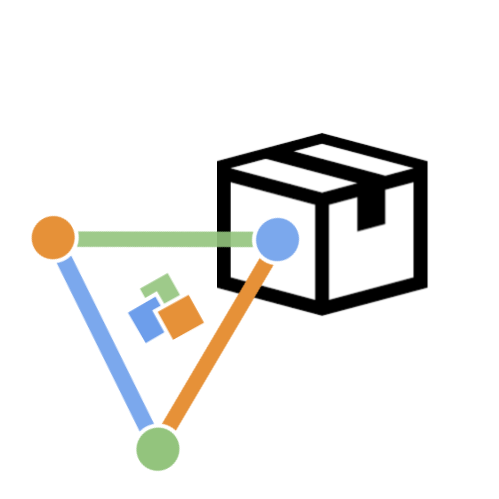
A Plant Pathologist's Guide to Writing Your First R Package
So you want to write your first R package, but you don't know where to start? We can help with that! Writing an R package is not difficult, but it can be intimidating for a first timer. Why would you want to write an R package? Read more to find out!
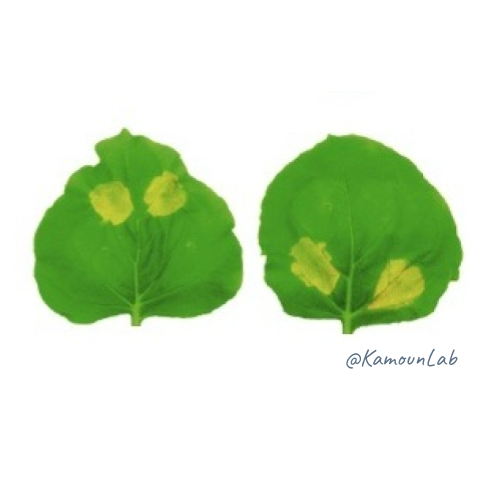
OPP Interviews: Sophien Kamoun
In this OPP series we will be interviewing scientists in Plant Pathology or related areas who has embraced open science and contributed knowledge and tools to advance the field. Our first interviewee is Prof. Sophien Kamoun, a senior scientist with the Sainsbury Laboratory, Norwich, UK. Dr. Kamoun is known for his prolific Tweeting but, also importantly, for his work with oomycetes, effectors, genomics and evolution.
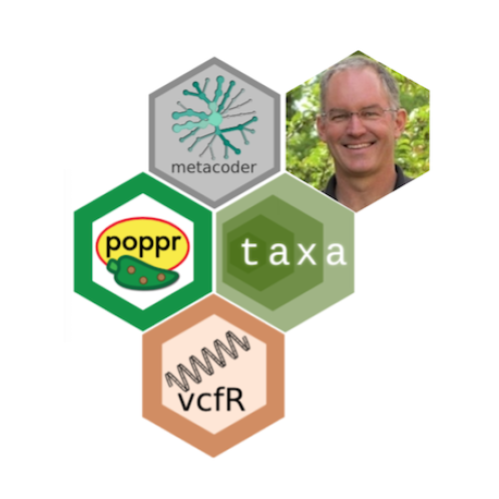
OPP Interviews: Niklaus J. Grünwald
In this OPP series we will be interviewing scientists in Plant Pathology or related areas who has embraced open science and contributed knowledge and tools to advance the field. Our first OPP interview features Dr. Niklaus Grünwald, a plant pathologist with USDA ARS, Corvallis, OR, USA. Nik is well recognized by his research on population genetics and genomics of plant pathogens - mainly on oomycetes of major importance to global agriculture.
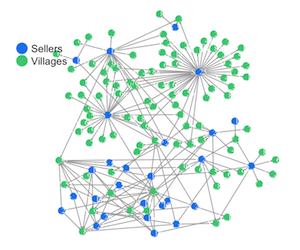
Workshop: Network Analysis in Plant Pathology
This workshop will prepare participants to interpret network analyses, and will provide participants with experience in network analysis for several representative data sets. The workshop will use the R programming environment, and will provide a brief introduction to R.
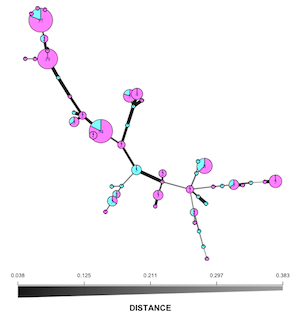
Workshop: Population Genomics in R
This workshop cover analyses of plan pathological data from tools such as whole-genome variant calling and genotyping-by-sequencing or RADseq once variant call data are in hand. This workshop will not cover genome assembly, read mapping to reference genomes or the calling of variants.

Establishing a community for supporting and fostering adoption of reproducible research using R
Lightning talk presented at useR!2018 in Brisbane, Queensland, Australia by Adam Sparks who discuss our methods of community building and what has worked and what has not for others that may wish to pursue similar efforts
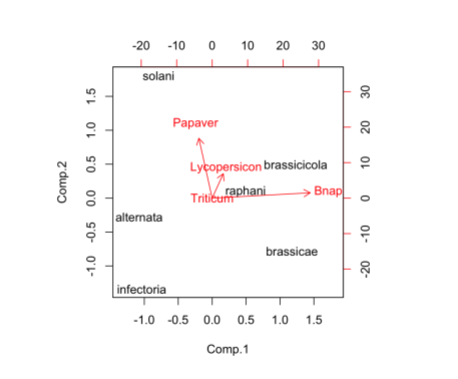
Workshop: Introduction to Multivariate Statistics Using R
This workshop aims to introduce new users to several different and useful multivariate analysis methods available in the R statistical computing language. It is focus will be on application rather than background theory.

Open ideas, data and code sharing: epidemiologists should be in front!
Talk given by OPP Founder, Emerson M. Del Ponte, at the 12 International Epidemiology Workshop on June 12 2018 (Lillehammer, Norway) to promote the initiative among plant disease epidemiologits

The fall of an empire
I recently Tweeted an animated GIF that depicted the yearly variation in efficacy of tebuconazole, a DMI fungicide, evaluated in field trials, for the control of soybean rust in a major soybean region of Brazil (Mato Grosso state). The Tweet got a lot of attention, not only because of the important issue, but I think also because of the nice way to visualize the data. So I decided to share the R code use to produce the animation for others' presentations.
What is going on in OPP? a quick summary of the first five months
OPP was created in early January and we had no idea how OPP would be received and whether it would catch interest and be sustainable. In this post, we provide a brief summary of major achievements during the first five months of OPP.
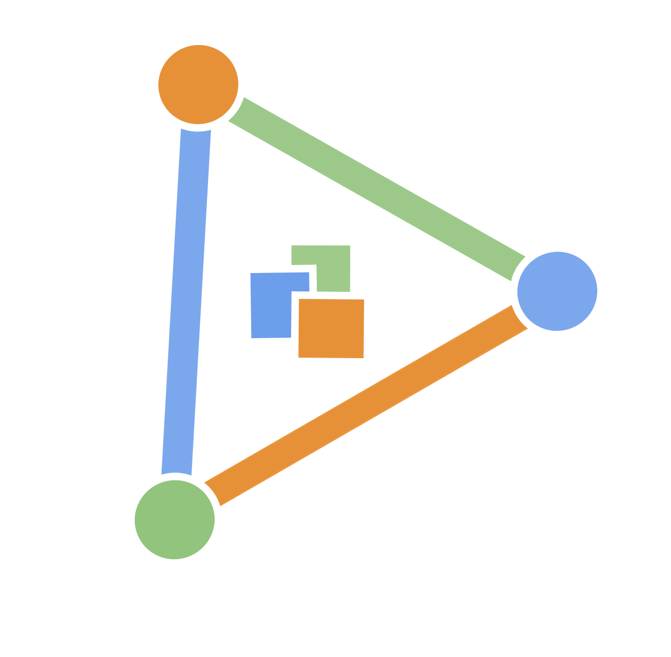
Are you a scientist dealing with computational plant pathology? Then let's connect and code together!
We propose to develop a community that values the sharing of knowledge, ideas and data; building capacity; and promotes open and reproducible research to benefit plant pathologists.
Categories
- Articles (82)
- BPP Seminars (1)
- CCDM Seminars (1)
- CCH-USQ Seminars (8)
- Databases (7)
- General (4)
- Interviews (9)
- Julia4PlantPath (2)
- OPPToons (2)
- Preprints (1)
- Qld-APPS Seminars (5)
- R Packages (2)
- R4PlantPath (17)
- Reproducible Research (6)
- Research Compendia (1)
- Talks (2)
- U.K. Seminars (2)
- Virtual Seminars (10)
- Workshops (7)